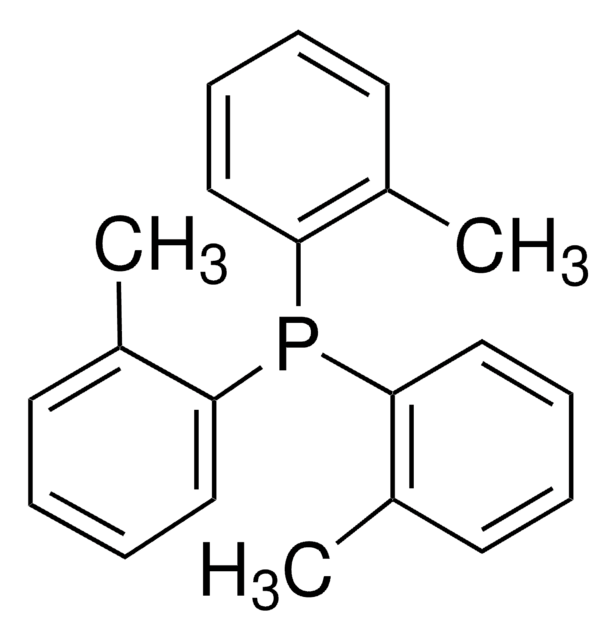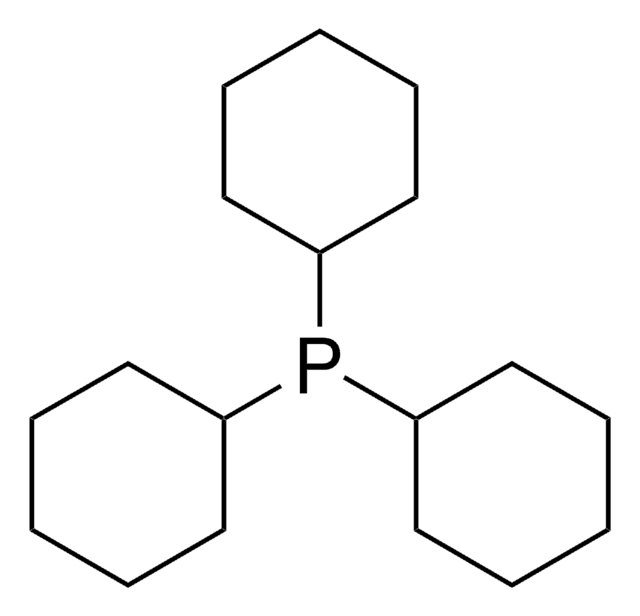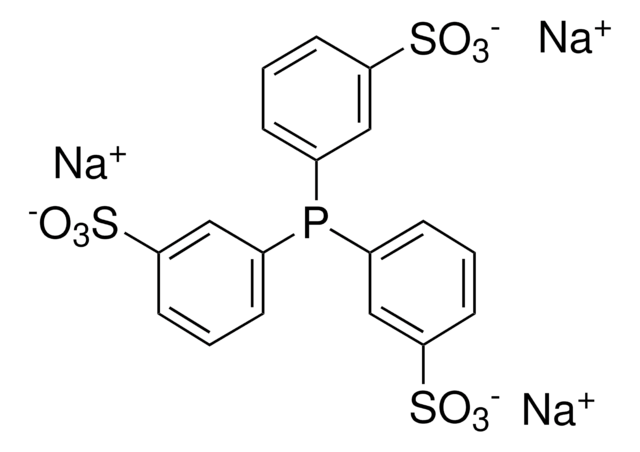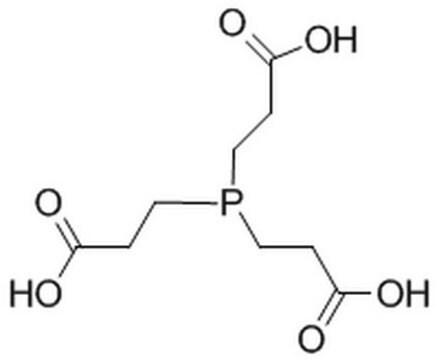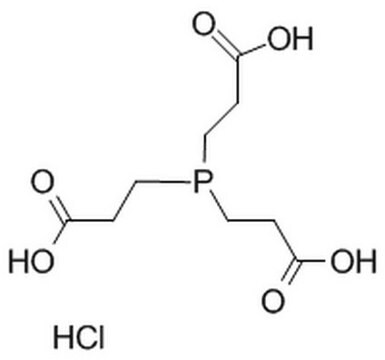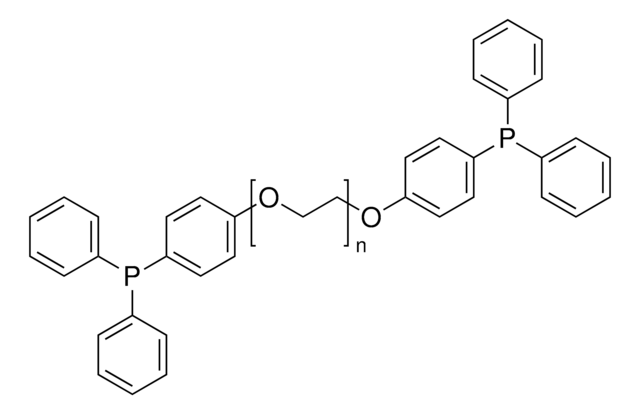777854
Tris(hydroxypropyl)phosphine
≥80%
Sinonimo/i:
THPP
Autenticatiper visualizzare i prezzi riservati alla tua organizzazione & contrattuali
About This Item
Formula empirica (notazione di Hill):
C9H21O3P
Numero CAS:
Peso molecolare:
208.24
Numero MDL:
Codice UNSPSC:
12352128
ID PubChem:
NACRES:
NA.22
Prodotti consigliati
Livello qualitativo
Saggio
≥80%
Stato
liquid
Impiego in reazioni chimiche
reagent type: reductant
Densità
1.136 g/mL at 25 °C
Stringa SMILE
OCCCP(CCCO)CCCO
InChI
1S/C9H21O3P/c10-4-1-7-13(8-2-5-11)9-3-6-12/h10-12H,1-9H2
YICAEXQYKBMDNH-UHFFFAOYSA-N
Descrizione generale
Tris(hydroxypropyl)phosphine (THPP) is a reducing agent widely used for the reductive cleavage of disulfide bonds in small molecules in both aqueous–organic media.
Applicazioni
Tris(hydroxypropyl)phosphine can be used:
- As a reducing agent in the reduction of dehydroascorbic acid to ascorbic acid
- In the cleavage of disulfide bonds in small molecules
- As a catalyst in the conversion of polysulfides
Avvertenze
Danger
Indicazioni di pericolo
Classi di pericolo
Skin Corr. 1B
Codice della classe di stoccaggio
8A - Combustible corrosive hazardous materials
Classe di pericolosità dell'acqua (WGK)
WGK 3
Punto d’infiammabilità (°F)
Not applicable
Punto d’infiammabilità (°C)
Not applicable
Scegli una delle versioni più recenti:
Possiedi già questo prodotto?
I documenti relativi ai prodotti acquistati recentemente sono disponibili nell’Archivio dei documenti.
I clienti hanno visto anche
Hairong Wang et al.
Biomaterials, 181, 310-317 (2018-08-11)
Tumor hypoxia is known to be one of critical factors that aggravate the tumor resistance to photodynamic therapy (PDT) in which oxygen is essential for tumor destruction. Herein, catalase, an enzyme to trigger hydrogen peroxide (H2O2) decomposition, is modified by
Victoria J Valerón Bergh et al.
Pharmaceutical development and technology, 23(8), 761-770 (2017-04-01)
Dry alginate foams intended for antibacterial photodynamic therapy (aPDT) of infected wounds were prepared. aPDT is a treatment modality involving light of appropriate wavelength, oxygen and a photosensitizer (PS) to produce radicals that attack biological targets (e.g. bacteria). The hydrophobic
Cyrille Megel et al.
Nucleic acids research, 47(2), 941-952 (2018-11-22)
RNA fragments deriving from tRNAs (tRFs) exist in all branches of life and the repertoire of their biological functions regularly increases. Paradoxically, their biogenesis remains unclear. The human RNase A, Angiogenin, and the yeast RNase T2, Rny1p, generate long tRFs
Kristine Opsvik Wikene et al.
Journal of photochemistry and photobiology. B, Biology, 171, 27-33 (2017-05-05)
Natural deep eutectic solvents (NADES) are a third class of liquids, separate from water and lipids. Some NADES, especially those containing organic acids, have been suggested to possess antimicrobial properties. Such properties may be advantageous when NADES are used as
Designing dendritic polymers containing phosphorus donor ligands and their corresponding transition metal complexes.
Dasgupta M, et al.
Coordination Chemistry Reviews, 233(19), 223-235 (2002)
Il team dei nostri ricercatori vanta grande esperienza in tutte le aree della ricerca quali Life Science, scienza dei materiali, sintesi chimica, cromatografia, discipline analitiche, ecc..
Contatta l'Assistenza Tecnica.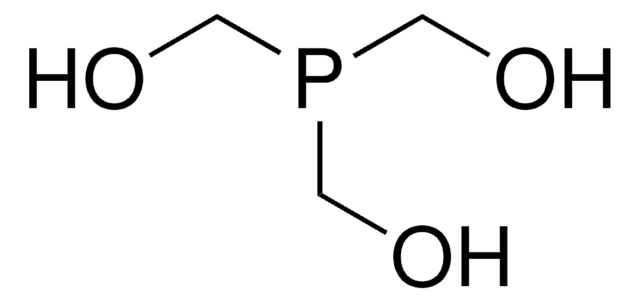
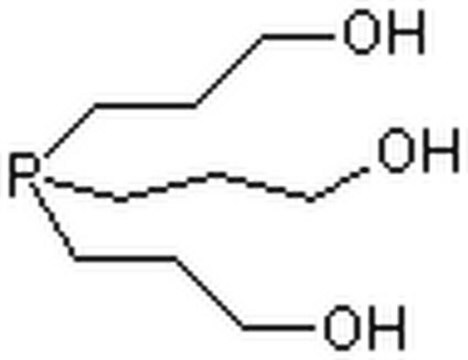


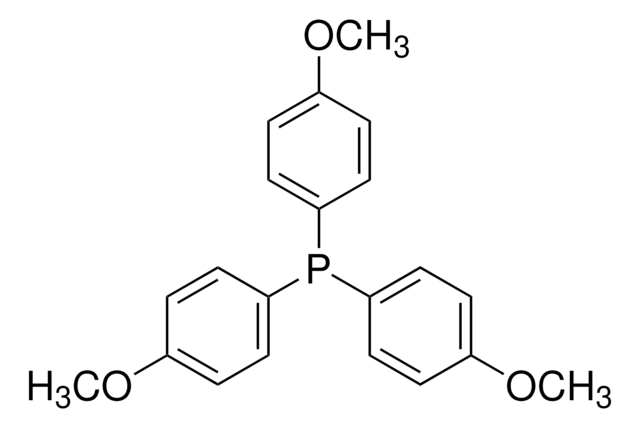
![1,3,5-Triaza-7-phosphatricyclo[3.3.1.13,7]decane 97%](/deepweb/assets/sigmaaldrich/product/structures/101/883/9fb92027-f8be-41b8-abd5-232e7cac2696/640/9fb92027-f8be-41b8-abd5-232e7cac2696.png)
